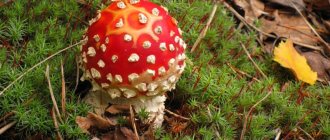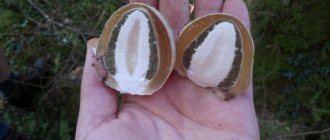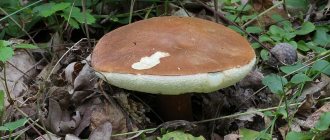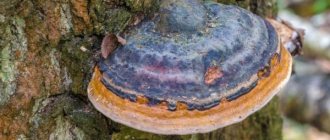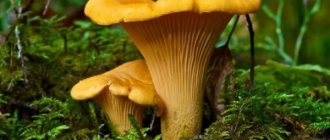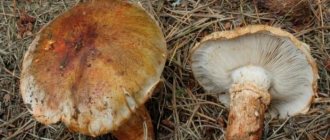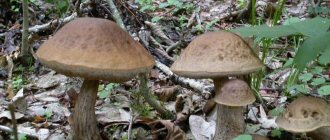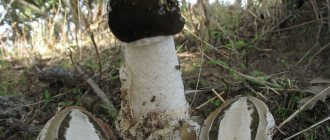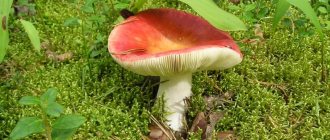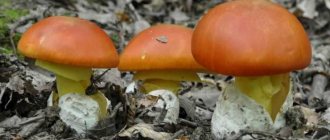Ram mushroom, griffola curly mushroom, dancing mushroom, or meitake - these are all names of one mushroom. Yes, yes, he really has a lot of names and as you read, you will understand why.
Grifola curly is a rare, edible mushroom that is listed in the Red Book. It is considered a delicacy. It is famous for its unsurpassed taste and invaluable benefits. And they call it dancing because mushroom pickers, when they find it, are so happy that they even dance, because a mushroom can grow from 1 to 10 kg, and in more favorable conditions even up to 20 kg. You can feed the whole family and don’t be afraid of guests coming, since they won’t go hungry. It reaches this size in just 10 days. In today's article we will look at the main features and beneficial properties of this unusual representative of the mushroom kingdom.
Description
The ram mushroom (Grifola curly or maitake) is a truly unique specimen, famous for its amazing taste and great benefits. Not every mushroom picker knows what kind of mushroom it is and why it is so valuable. This article provides a detailed description of grifola curly, information about its beneficial properties and recommendations for preparation.
This is interesting! Many people are wondering why this specimen received such a name. This is explained by its appearance: the mushroom has many twisted legs with caps, each of which resembles a lamb’s horn. In addition, the specimen is popularly called “lamb’s head” and “mushroom happiness.”
Types and their descriptions with photos
The ram mushroom has several varieties:
- A relative of Meitake is Sparassis curly, also called mushroom cabbage. The young mushroom has a whitish color, and very mature specimens turn yellow. Weight is several kilograms. It grows mainly at the roots of pine trees, the branching is dense, curly, the leg goes deep into the soil. It has white pulp with a specific aroma.
You may be interested in:
What the boletus mushroom looks like and its description (20 photos) One of the most common edible mushrooms in our country, which is equated in taste with white mushroom...Read more...
- Grifola umbellata is also considered a variant of the mushroom; in appearance it is very similar to Grifola curly. The stem of the umbrella species is divided into a number of branches, on which fibrous caps with small scales are located. On the lower part there is a huge number of tubes with spores.
The young mushroom has a very pleasant smell, reminiscent of dill. You will be pleasantly surprised by its taste. But old mushrooms don't smell very nice. Grifola umbellata is a rare specimen.
Description of the mushroom
The description of the mushroom will be useful to those who plan to find this miracle of nature in the forest, as well as to those who are interested in this specimen. It is noteworthy that maitake is considered the largest tinder fungus. It is capable of growing up to one meter in diameter and up to ten kilograms in weight. In addition, the mushroom is included in the Red Book.
Grifola belongs to the Fomitopsis family. The specimen has a complex structure. It has a fruiting body formed by pseudocap mushrooms, which are distinguished by thin, wavy, flat and funnel-shaped caps, also with branching-type stems. The latter have no more than one centimeter in diameter and up to ten centimeters in length. These legs are connected into a low but stable stump, which is the main one of the mushroom.
The caps of the ram mushroom are quite fleshy. They can have a leaf-shaped or semicircular shape, a diameter of four to ten centimeters, and the surface is rough to the touch. The shade of the legs is grayish-brown or yellow-gray, and the caps are usually somewhat darker. © https://ydoo.info/product/grib-baran-grifola-kurchavaya.html At the same time, under such a skin hides white flesh, distinguished by a pronounced nutty taste and smell.
The uniqueness of this species lies in the fact that on average a ram mushroom contains 80-100 mushrooms. But it is possible to detect individual specimens of Grifola curly, which include 200 or more mushrooms. By the way, in just ten days this forest representative is able to gain weight up to ten kilograms.
This is interesting! If you touch the small hats, they will fold. And this type of mushroom is not eaten by worms.
The ram fungus is considered a species that destroys trees. For its habitat, it often chooses rotten wood or old stumps. But in some cases, it can conveniently settle on healthy trees (preferably deciduous), leading to their destruction by consuming nutrients. At the same time, griffola infects the plant with a significant number of various diseases, including white rot, which is very dangerous.
In Russia, curly griffola is common in the European part of the country, the North Caucasus, Western Siberia and the Far East. The mushroom can be found in smaller quantities in the forests of Western Ukraine. This species grows in oak and maple broad-leaved forests, but can also choose linden, chestnut and beech trees.
The season for collecting curly griffola does not last long, as it quickly rots. Usually the fruiting process begins in August, but ends by mid-September. This mushroom is considered quite rare today.
Worth knowing! Ram mushroom is an edible mushroom. It is distinguished by a rather interesting taste and piquant smell. That is why you can use this forest dweller not only for medicinal purposes, but also by using it in cooking.
Appearance
The ram mushroom looks very fancy. Multiple stems are attached to a short base, which are intertwined in the most mysterious ways, and at their ends there are numerous caps. Their shape can be either round or oval, in the form of a hemisphere.
The caps are white below and grayish-beige above. This organism has several names. Scientifically, it is called griffola curly, and among the people it is sometimes called ram's head mushroom, meitake mushroom, or kvochka mushroom.
This mushroom, as a rule, grows in oak forests, where it feels at ease, as comfortable as possible, and therefore multiplies quickly.
It is much less common in maple plantings, and even more so in chestnut or linden. Grifola grows in hard-to-reach places, so it is not easy to find it, as it is often hidden in the roots of fruit trees. You can often find it under apricots, plums, and peaches. Very often, mushroom pickers pass by the meitake without noticing, since it has the ability to camouflage itself well into the terrain.
The mushroom blends in with the color of fallen leaves, which is why it is so difficult to notice. It is very popular in China because it is an integral part of folk medicine there. And since curly griffola is a rare species, in China it is grown in orchards specially created for this purpose.
Tables with descriptions of edible, poisonous and non-poisonous mushrooms
Benefits of Grifola curly
The benefits of Grifola curly have been known for a long time. Firstly, this mushroom is valued for its excellent immunostimulating effect. Secondly, in terms of the number of useful components, this specimen is extremely valuable. Third, maitake can provide significant cardiovascular support. And this mushroom contains substances that have a caring effect on the walls of blood vessels, cleanse the blood of cholesterol and normalize blood flow in general.
Based on this substance, many medications with a bactericidal effect are prepared. In addition, medicines and decoctions for tuberculosis have long been prepared from mushroom powder. With regular use, curly griffol helps improve the functioning of the nervous system, fights severe headaches, and saves from chronic fatigue and chronic overwork.
Grifola can have a beneficial effect in the treatment of problems in the oncological field. It is an excellent additional remedy that neutralizes the side effects of chemotherapy and prevents the formation of metastases. This product is also an excellent cancer prevention product.
The maitake mushroom has proven itself to be excellent in cleansing the body of toxins and waste. It has a positive effect on the condition of the skin:
- restores elasticity and firmness;
- removes greasy shine;
- cleanses pores;
- evens out the tone.
Using ram mushroom in cooking
The use of ram mushroom in cooking is quite common due to its pleasant taste and interesting aroma. Due to the fact that grifola is a rarity, it can become a real decoration for the holiday table.
Let us remind you that it is recommended to eat young mushrooms. They are distinguished by their tender and snow-white flesh. Darkened (old) products have a coarser, more fibrous structure and a bitter taste. The ram mushroom is not used in its raw form; it must be subjected to heat treatment.
Maitake is often boiled or fried. It is often added to soups, salads or sauces. Dishes made from dried mushrooms will be incredibly tasty, as this allows them to acquire a more expressive taste. Grifola is practically not used as a main dish.
Advice! You can use ram mushroom as a kind of spice. Dry the curly grifola and grind it to a powder. It turns out to be an interesting spice that can be used to complement salads, meat and fish dishes. By the way, in the USA, healthy bagged tea with a unique taste is made from mushroom powder.
It should be remembered that the fresh product can be stored for no more than 48 hours. It is advisable to cut and cook it immediately after finding it. You can find a huge number of recipes, and, if you believe the reviews, the dishes turn out very tasty. If you do not plan to do this, it is best to dry it and then use the product for its intended purpose.
Preparation of potions and use
From ancient times to the present day, powder made from dried grifola curly mushrooms has been used in the treatment of open wounds, cuts, and burns that do not heal for a long time. Simply sprinkle the powder onto the open wound. You can also prepare your own oil tincture.
What does russula look like: description and types of mushroom
Oil tincture
This medicine will be especially appropriate for large infected wounds. The density of the oil will thoroughly fill the entire damaged area, creating a healing film. It is very easy to make such a medicine with your own hands:
- for 250 ml of olive oil you need to add 1.5 tablespoons of dry powder;
- mix well;
- put in a dark and cool place to infuse for about half a month (the product is prepared for future use).
It should be consumed 15 minutes before meals, after shaking along with the sediment. This product also perfectly decomposes fats, so it is often used in the treatment of obesity.
Homemade tincture
It is very simple to prepare a tincture of lamb mushroom. The whole process consists of several steps:
- you need to take 5 teaspoons of powdered mushroom;
- pour 250 grams of vodka;
- mix well;
- then put it in a dark and cool place for 14 days.
After the tincture is ready, it must be consumed in a course of at least three months in a row.
Mushroom broth
For preventive purposes, you can drink a decoction of Grifola curly. You just need to pour 2 g of dried mushroom powder with warm water and let it brew overnight, then drink 100 g 15 minutes before meals. However, you should remember that you should not self-medicate. And despite the apparent versatility in the treatment of meitake mushroom, consultation with your doctor is necessary. This mushroom has virtually no contraindications; it does not harm human health.
Liver mushroom: description, benefits and methods of preparation
Home cooking technology
Cooking technology at home involves boiling, stewing and frying the product. In any case, Grifola curly should be washed well under running water. Next, if you plan to stew, you need to cut the mushrooms into pieces and fry for twenty minutes with chopped onions, like ordinary meat. You can add chopped carrots, chopped potatoes and your favorite seasonings to the mushrooms.
Ram mushroom broth will be especially tasty, including in combination with vegetables. In this case, there is not even a need for early soaking of the maitake. You just need to wash it, cut it into pieces and add it to the broth fifteen minutes before the dish is ready.
Many people recommend trying the ram mushroom fried. The delicacy turns out incredibly appetizing, with a pronounced mushroom aroma. Frying the food will not take more than fifty minutes. Remember that you first need to wash the mushrooms under running water to remove any contaminants. Next, the product is cut into pieces, boiled until tender, and finally fried for fifteen minutes until a golden crust appears. Next, you can add carrots and onions (fried) to the mushrooms, and then sour cream, spices and salt. All that remains is to mix everything well and simmer the food for twenty minutes. Delicious mushrooms are ready, they can be served as a main dish with a side dish or as an appetizer.
Application in medicine
The maitake mushroom is popular not only as an edible mushroom. Its unique composition and healing properties make it possible to use it in the treatment of many diseases. Dietary supplements with maitake can be bought at the pharmacy, or you can prepare the medicine at home.
Below are descriptions of medications, methods of their manufacture and use.
Extract
The extract of these beneficial mushrooms has been patented and is known as Maitake D-fraction. It is available in powder or tablet form. Manufacturers claim that maitake extract helps with:
- reduced immunity;
- metabolic disorders;
- diabetes mellitus;
- menopause;
- elevated cholesterol levels;
- hypertension;
- viral diseases;
- fungal diseases.
Maitake mushroom powder
At home, you can prepare mushroom powder by grinding dried mushrooms in a coffee grinder. It should be stored in a hermetically sealed container in a dry place.
The powder is used to prepare medicinal infusions and decoctions, and is also added to food.
Maitake tincture
3 tbsp. mushroom powder is poured into 0.5 liters. vodka, mix, close tightly and infuse for 2 weeks at room temperature. Shake before use.
Helps with:
- reduced immunity;
- high cholesterol levels;
- problems with excess weight;
- treatment of oncological diseases.
Directions for use: 1–3 tsp. 3 times a day before meals (30 minutes before). Course duration is 3-4 months.
Maitake wine
Add 3 tablespoons of mushroom powder into a bottle of dry red wine, seal tightly and keep in a dark place at room temperature. Shake before use.
Helps with:
- problems with excess weight;
- insufficient immunity;
- menopause;
- treatment of oncological diseases as part of complex therapy.
Directions for use: 1–3 tsp. 3 times a day before meals (30 minutes before). Course duration is 3-4 months.
Maitake oil
3 tbsp. mushroom powder is poured into 0.5 liters. vegetable oil (linseed, olive), mix, cover and leave for 2 weeks at room temperature. Shake before use.
Helps with:
- reduced immunity;
- problems with excess weight;
- treatment of oncological diseases.
Directions for use: 1–3 tsp. 3 times a day before meals (30 minutes before). Course duration is 3 months. After a ten-day break, the course is repeated.
Medicinal properties of ram mushrooms
The medicinal properties of ram mushrooms are known to many. In China, griffola curly is currently cultivated on an industrial scale as a medicinal plant. To do this, entire “hordes” of maitake are created on fruit trees, specially populated with mushrooms. When the mushrooms ripen, an extract is made from them. It is additionally purified from possible harmful impurities. The average yield is 1 kilogram of extract per 10 kilograms of fresh product.
Why is the extract made specifically? Scientists have come to the conclusion that this particular product exhibits the greatest number of positive properties of this mushroom. It is worth knowing that its capabilities are enormous. The mushroom helps in the fight against a variety of health problems.
So, the ram mushroom has medicinal properties, which are:
- improve glucose and insulin metabolism;
- provide prevention of heart and vascular diseases due to the removal of cholesterol;
- increase the elasticity of the walls of blood vessels;
- reduce blood pressure;
- strengthen immune functions, especially in the fight against cancer;
- minimize the negative manifestations of menopause, helping women normalize their own condition even in such a difficult period;
- normalize metabolic processes and hormonal levels in order to normalize and maintain weight at an optimal level;
- fight viral diseases, generating healthy cells;
- fight liver diseases, including cirrhosis;
- reduce or eliminate discomfort during and before menstruation.
In other words, the benefits of the extract are clear to everyone. It normalizes the functioning of the endocrine systems, heart, blood vessels, helps with liver diseases caused by toxins or viruses, and eliminates fungal infections. The healing power of the ram mushroom has been proven by specialists of modern medicine.
In folk medicine, extracts, decoctions and infusions are actively used. Honey extract of the ram mushroom is also used in cosmetology. In particular, this product is often included in cosmetics, helping to restore the beauty and health of the skin.
Chemical composition
Ram mushroom is a low-calorie product. Its nutritional value per 100 g is about 31 kcal. The composition of fruiting bodies is dominated by water.
Vitamins
- folic acid (B9);
- riboflavin (B2);
- choline (B4);
- pantothenic acid (B5);
- pyridoxine (B6);
- thiamine (B1);
- niacin (B3);
- calciferol (D);
- alpha tocopherol (E).
Macronutrients
- phosphorus;
- potassium;
- calcium;
- magnesium;
- sodium.
Microelements
- copper;
- zinc;
- selenium;
- iron.
Amino acid composition
- aspartic acid;
- leucine;
- alanine;
- arginine;
- glutamic acid;
- lysine;
- valine;
- serine;
- glycine;
- proline;
- tryptophan;
- tyrosine;
- phenylalanine;
- methionine;
- isoleucine;
- histidine;
- cysteine.
The composition also contains substances that have disinfecting, antibacterial, analgesic, cleansing, and anti-inflammatory effects on the body. They minimize capillary fragility, increase the elasticity of red blood cells, prevent blood clotting, remove toxins and waste, lower cholesterol, kill pathogens, normalize the immune system and regulate metabolism:
- triterpenes;
- saponins;
- polysaccharides;
- chitin;
- flavonoids;
- steroids;
- phytoncides.
Harm and contraindications
“Ram’s head” has no harm or contraindications as such. Some people consider these specimens to be inedible, but this is not true. It is worth considering that the ram mushroom is famous for its chitin content. The latter is contraindicated in significant quantities, which is why you should not get carried away with Grifola curly, or any mushrooms either.
Grifola curly, like any other mushroom, can cause allergies, including to chitin. That is why its consumption is contraindicated for young children. The recommended start for introducing mushrooms into children's diets is over twelve years of age. It is also not recommended to use grifola during pregnancy and lactation.
Advice! It is better to search for this unique and valuable mushroom away from big cities, industrial enterprises and highways. This is explained by the fact that mushrooms are able to absorb and retain harmful substances that they receive from air, water and soil.
Now you know what the ram mushroom is, where it grows and what are the benefits of its use. This means that you will not only be able to find it in the forest based on the photo, but also then cook it correctly. And also remember that curly griffola is famous for its huge number of beneficial properties. Use this miracle of nature correctly, healing your body and enjoying the amazing aroma and taste!
Geography of growth and time of collection
The ram mushroom is not widespread and is a rare species. It has a protected status and is listed in the Red Book of Russia.
Present in the eastern regions of China and Japan, there are in Western European and North American territory, in Australia and the Caucasus.
In Russia, growing places are few and cover the Far Eastern, Volga and Ural regions. It grows in broad-leaved forests, including maples, beeches, oaks and chestnuts, settling on trunks.
Fruiting is not annual, occurring in the last third of July until the end of September. It is distinguished by its growth intensity, reaching its maximum size in 1-1.5 weeks.
Development is accompanied by the rapid appearance of white rot. Not susceptible to attack by worms and insects, which is extremely important for mushroom pickers.
